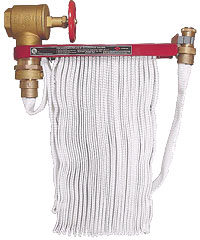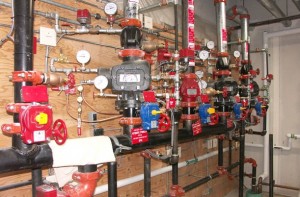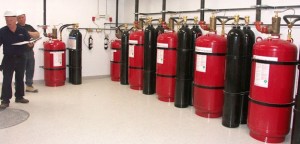
Stumpf Fire Protection offers a variety of options when if come to protecting your valuable equipment and facilities. Choosing the right type of system, or combination of systems and products is integral to achieving the best level of protection. Here at Stumpf Fire, we’ll break things down and explain your options is plain English so that you, the client can make an informed decision about the level of protection you require, while complying with applicable building and fire codes.
See below for a list of common products and services that Stumpf Fire Protection offers from design to installation, inspection, maintenance and repair. We are by no means limited to the list below, so please inquire further for additional products and services.
Sprinkler System (Wet, Dry, Anti-Freeze, Pre-Action & Deluge
[showhide type=”post” more_text=”Show more…” less_text=”Show less…”]
The automatic fire sprinkler system was developed over 130 years ago and remains a cost effective, efficient and reliable means of controlling a fire. In the past, fire sprinkler systems were used almost exclusively in large warehouses or industrial applications. Today, fire sprinkler systems can be found protecting almost any occupancy. Easily integrated into a building’s electrical alarm system, fire sprinkler systems not only contain a fire, but also initiate an audible alarm to alert those in the vicinity that fire conditions exist. Whether it be an office building, an airport, an oil refinery or a home, fire sprinkler systems have become very versatile in their applications.
Several different varieties of fire sprinkler systems exist. Installing the right system for the intended application is paramount when it comes protecting valuable property. We at Stumpf Fire Protection are dedicated to making this process easy by providing free comprehensive estimates for virtually any occupancy. As always, everything we do complies to NFPA 13: Standards for the Installation of Sprinkler Systems and is installed by trained Local 853 Unionized Sprinkler Fitters.
Below, are brief descriptions of the most common types of fire sprinkler systems installed today.
The Wet Pipe System
By far the most common type of sprinkler system is called a wet pipe system. The wet pipe system is like the building block from which all other types of fire sprinkler systems were created. These simplistic systems consists of a water supply, an alarm check valve and/or a back-flow preventer (to prevent back-flow into the water supply), and a network of piping which deliver water to heat sensitive fire sprinklers. Fire sprinklers then discharge when a fixed temperature has been reached. Each individual sprinkler operates purely mechanically and independent from one another, so the only sprinklers discharged are those which are necessary to contain the fire. For More information on the operation of a sprinkler see this video link. VIDEO.
Dry Pipe System
Similar in design and function to that of a wet pipe system, dry pipe systems offer the advantage of operating in freezing conditions. Instead of a network of water filled pipes, dry pipe systems are filled with compressed air or nitrogen. Upon activation of a sprinkler head, this air is expelled from the network of piping and replaced with water through a mechanical dry pipe valve. This water is then discharged from the activated fire sprinklers. Dry pipe systems are commonly found in arenas, freezers, cold storage areas, shipping docks and parking garages.
Pre-action Systems
Pre-action systems are similar to dry pipe systems in the fact that the network of piping in a pre-action system contains closed fire sprinklers and no water. Pre-action systems are unique however as they require the activation of electrical detection devices (e.g smoke, heat detectors) to operate. Pre-action systems themselves are commonly separated into two categories. The first is called a “single interlock” pre-action system, where by water is released into the system piping upon activation of a detection system. Pre-action systems can also be designed not to release water into the system piping until both a fire sprinkler and detection device have been activated. This is called a “double interlock” pre-action system. Pre-action systems provide an insurance against accidental or unnecessary discharge, as the expulsion of water from fire sprinklers only occurs after both the detection devices utilized to operate an electric solenoid in the pre-action valve are activated, and the sprinkler itself has been activated, thus providing an opening into the protected area. Pre-action systems are commonly found in areas where the expulsion of water could be of costly consequence. Examples include, but are not limited to computer server rooms and telecommunications or data processing facilities.
Deluge System
A deluge or “total flooding” system is similar to that of a pre-action system, except the fire sprinklers in a deluge system are open. This means that upon activation of the system by way of electrical detection or manual pull station, water is immediately expelled into the occupancy through all openings. Deluge systems are generally reserved for extra hazard occupancies where the activation of standard fire sprinklers would simply not provide the adequate suppression velocity to control a fire. These types of systems may be found in chemical storage facilities or power plants.
Anti-Freeze Systems
Anti-freeze systems are similar in operation to a wet pipe system, only the network of piping is filled with an anti-freeze solution. Upon activation of a fire sprinkler, this solution is released and is followed by water from its water supply. Anti-freeze solutions are generally used in smaller applications (usually 20 or less sprinklers). These systems are designed to be used where freezing conditions exist and are commonly added to existing wet pipe systems to protect small occupancies such as outdoor loading docks or garbage compactors.
[/showhide]
Fire Alarm Systems and Monitoring
[showhide type=”post2″ more_text=”Show more…” less_text=”Show less…”]
Stumpf Fire Protection’s Fire Alarm division offers a broad range of serviced including but not limited to:
- Security system installation and service
- Fire Alarm and Security monitoring
- Emergency light inspection and maintenance
- CCTV installation and service
- Telephone entry system installation and service
- Multi-room audio installation and service
For more information on these services, please contact Chris Kalka
Phone: (519) 888-0043
Email: Chris Kalka
*Stumpf Fire Protection provides estimates free of charge.
[/showhide]
Clean Agent Supression Systems (waterless fire suppression)
[showhide type=”post3″ more_text=”Show more…” less_text=”Show less…”]
Where conventional water-based fire suppression is impractical and/or the risk of water damage is deemed too costly, clean agent suppression systems can provide protection from fire while at the same time reducing down time. With virtually no clean up, suppression systems utilizing clean agents are ideal for the following applications:
- computer server rooms and sub-floors
- UPS rooms
- telecommunication facilities
- art galleries
- archival storage
- areas with extensive robotic or electrical components
The industry standard of the past was a product called Halon 1301. This product was effective, compact and affordable, however environmental and safety concerns have rendered it unacceptable for today’s standards. Today, two suppression agents have done what Halon 1301 could not; extinguish fires rapidly and safely with minimal risk to the environment.
Stumpf Fire Protection is experienced in the installation, servicing and maintenance of the following clean agent suppression systems:
FM 200 by DuPont
FM 200 is a suppression agent used in tens of the thousands of applications around the world to provide fire protection for some of the most vital work spaces and facilities. Fast acting, safe and with a low environmental impact, it is the most widely accepted clean agent in use today.
Learn more
Novec 1230 by 3M*
With environmental impact being of great concern these days, 3M has developed a new generation of environmentally conscience clean agents. With a zero ozone depletion potential, an extremely low global warming potential of one, and a five day atmospheric lifetime, Novec 1230 is on the forefront of environmental sustainability. This combined with impressive safety margins and effectiveness, makes Novec 1230 a quality product.
Learn more
*Both FM200 and Novec 1230 clean agents are UL, ULC, NFPA 2001 and FM Global approved and are ISO 14520 compliant.
For further inquiries, please contact Jeff Hayhurst at our office.
Phone: 519 888-7719
E-mail: jhayhurst@stumpffireprotect.ca
[/showhide]
Standpipe systems (fire hose systems)
[showhide type=”post4″ more_text=”Show more…” less_text=”Show less…”]

A standpipe system consists of a network of a piping, valves, outlets and often fire hoses designed to carry water throughout a building for the purpose of manual fire fighting. Standpipe systems are generally installed in buildings which are not equipped with a fire sprinkler system as they are usually not required in sprinklered buildings. Standpipe systems are separated into three classes.
- Class I – equipped with two and one-half (2 1/2) inch outlets for use by trained fire fighting personnel only.
- Class II – equipped with one and one-half (1 1/2) inch outlets and fire hose to use by trained personnel on site.
- Class III – equipped with both a two and one-half (2 1/2) inch outlet for use by fire fighting personnel and a one and one-half (1 ½) inch outlet for use by trained personnel on site.
The type of standpipe system installed in any building depends on many variables, including the occupancy, size of building and occupant load. Stumpf Fire Protection will provide a free comprehensive estimate for any standpipe installation. All of our standpipe installations conform to NFPA 14: Standard for the Installation of Standpipes and Hose Systems and are installed by trained Local 853 Unionized Sprinkler Fitters.
[/showhide]
Fire Extinguishers and Fire Extinguisher Training
[showhide type=”post5″ more_text=”Show more…” less_text=”Show less…”]
Fire extinguishers are an important means of extinguishing small fires in an emergency situation. The size and type of extinguisher required for each hazard varies considerably and can get confusing. We’ll take the guess work out of it and tell you exactly what type of fire extinguishers you need and explain why. At Stumpf Fire Protection, we can supply, install and service virtually any listed fire extinguisher and we also offer onsite instructional training by a qualified technician to ensure that they are used properly and safely. Please contact us for more information.
[/showhide]
Backflow Prevention Devices
[showhide type=”post6″ more_text=”Show more…” less_text=”Show less…”]
Stumpf Fire is OWWA Certified to test install, and repair all double check valve and reduced pressure backflow assemblies on fire systems. Please contact Service Manager Brad Stumpf to book your test today.
[/showhide]
Fire Hydrants
[showhide type=”post7″ more_text=”Show more…” less_text=”Show less…”]
[/showhide]
*Stumpf Fire Protection provides estimates free of charge.



